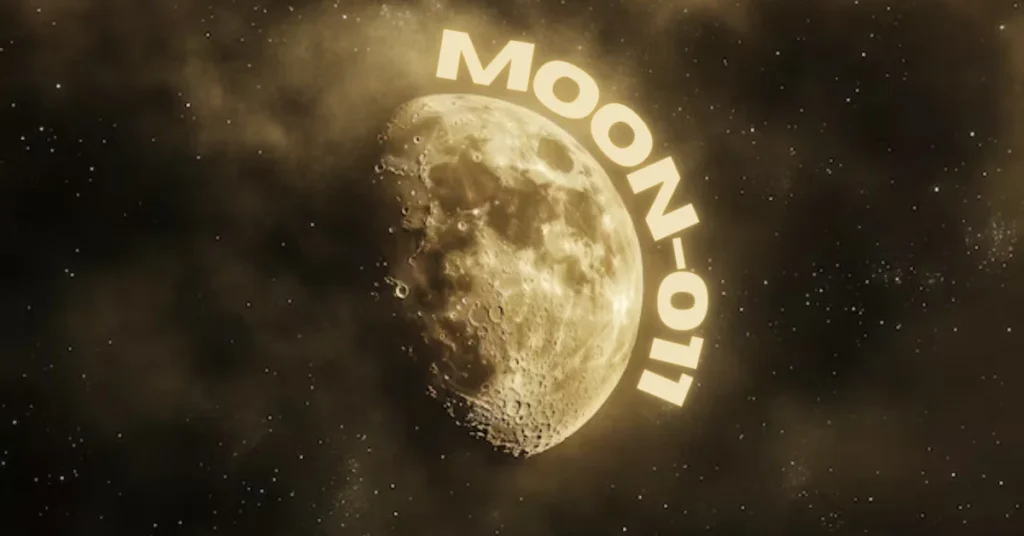Introduction to Moon-011
Moon-011 is a fascinating celestial body that stands out in our solar system. Its surface exhibits unique geological formations, including rugged mountains and vast plains. The texture of its surface varies dramatically, showcasing craters that hint at a tumultuous past.
One striking feature of Moon-011 is its unusual composition. Scientists believe it has high concentrations of rare minerals, making it an intriguing target for future exploration. This mineral-rich environment could reveal secrets about the moon’s history and formation.
Additionally, Moon-011 possesses an atmosphere unlike any other known moons. Though thin, this atmosphere creates interesting weather patterns that can influence research missions aiming to study it more closely.
The moon’s orbit also adds another layer of complexity to its characteristics. It follows an eccentric path around its parent planet, leading scientists to wonder how this affects potential landing sites and exploration strategies.
Theories and Speculations about Moon-011’s Origin
The origin of Moon-011 has sparked intense debate among scientists and astronomers. Some propose that it formed from debris left over after a massive collision between celestial bodies. This theory suggests a chaotic past filled with violent events.
Others speculate that Moon-011 might be a captured asteroid, wandering through the cosmos before being caught in the gravitational pull of its parent planet. This idea opens up fascinating questions about how many other moons could share similar origins.
An intriguing possibility is that it originated from an exoplanet system, flung into our solar neighborhood through cosmic interactions. Such theories challenge our understanding of moon formation and planetary dynamics.
Astrobiologists have even ventured to consider whether Moon-011 may harbor remnants of ancient life or materials essential for future exploration. Each hypothesis brings new excitement, pushing us to explore further into this cosmic enigma.
Impact of Moon-011 on Space Exploration
Moon-011 has sparked significant interest in the scientific community. Its unusual characteristics challenge our understanding of celestial bodies.
Explorers and researchers are eager to study its unique surface features. The presence of unexpected materials could provide insights into planetary formation.
This moon might reshape existing theories about satellite behavior. It raises questions about gravitational influences and orbital dynamics within our solar system.
Moreover, Moon-011 presents opportunities for future missions. Space agencies may consider it a potential site for robotic or even crewed exploration.
Such endeavors could enhance our knowledge of moons beyond Earth’s immediate neighbors. Each finding from Moon-011 can illuminate broader cosmic phenomena, fueling curiosity and innovation in space exploration technologies.
Future Research and Study of Moon-011
Future research on Moon-011 holds great promise for scientists and space enthusiasts alike. As telescopes become more advanced, our ability to study this enigmatic moon will improve significantly. New technologies may allow us to capture detailed images and gather data that was previously unattainable.
Collaborations between international space agencies could facilitate missions aimed at directly exploring Moon-011. Robotic landers might provide insights into its surface composition and geological history, revealing secrets hidden beneath its icy exterior.
Additionally, the potential for discovering extraterrestrial life forms or unique ecosystems adds an exciting dimension to future studies. Astrobiologists are keenly interested in investigating whether conditions exist that could support life.
Public interest is also growing around Moon-011. Citizen science initiatives may engage amateur astronomers in gathering observations, creating a community-driven approach to exploration. Through these efforts, we can expect a deeper understanding of this cosmic mystery in the years ahead.
Conclusion
Moon-011 has captured the imagination of astronomers and space enthusiasts alike. Its mysterious origins and unique characteristics present both challenges and opportunities for scientific exploration. As we continue to study this enigmatic moon, we might unveil secrets that deepen our understanding of celestial bodies in our universe.
The impact of Moon-011 on current space exploration efforts is already evident. Researchers are eager to learn more about its composition, atmosphere, and potential for harboring life. The findings could inform future missions not only within our solar system but beyond.
With ongoing advancements in technology and international collaboration among scientists, the future research surrounding Moon-011 promises exciting developments. Each new piece of information contributes to a larger picture—one that may redefine how we understand moons within their planetary systems.
As interest grows, so does the hope for discovery. Whether it reveals signs of ancient geological activity or hints at extraterrestrial phenomena, Moon-011’s stands as a testament to humanity’s quest for knowledge among the stars. Every glimpse into its mysteries beckons us further into the cosmic unknown.
FAQs
What is Moon-011’s?
Moon-011’s is a unique celestial body with distinctive geological features, rare minerals, and a thin, intriguing atmosphere. It orbits its parent planet in an eccentric path, presenting a compelling target for scientific exploration.
What are the key features of Moon-011’s?
Moon-011’s boasts rugged mountains, vast plains, and dramatic craters. Its surface varies significantly, and it contains rare minerals that could reveal secrets about its formation and history.
What are the theories about Moon-011’s origin?
Theories suggest Moon-011’s may have formed from debris after a collision, been a captured asteroid, or even originated from an exoplanet system. These ideas challenge current understanding of moon formation.
How does Moon-011’s impact space exploration?
Moon-011’s unusual characteristics could reshape theories on satellite behavior and gravitational dynamics, offering new opportunities for robotic or crewed missions and advancing our understanding of celestial bodies.
What are the future research possibilities for Moon-011’s?
Future research may involve advanced telescopes and robotic landers, aiming to explore its surface and potential for life. International collaborations and citizen science could also enhance our knowledge of this enigmatic moon.







